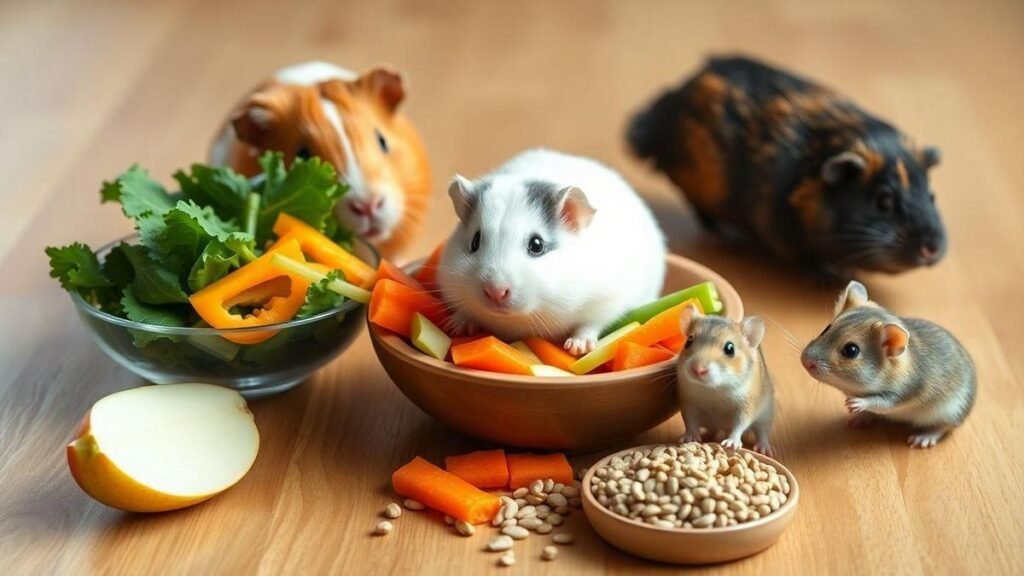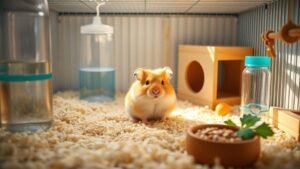Alimentos ricos em vitaminas para roedores em casa e saúde geral
Alimentos ricos em vitaminas para roedores em casa e saúde geral is why I feed vitamin-rich foods to my small pets. I want a strong immune system, healthy skin and fur, and steady energy. I watch for warning signs of poor care and fix things fast. My routine: nutrient-dense pellets as a base, fresh veggies daily or several times weekly, and supplements only with vet-approved routine guidance.

Key Takeaway
- I feed fresh leafy greens for vitamins.
- Small fruit treats provide vitamin C, sparingly.
- I add veggies like carrots and bell peppers for extra nutrients.
- I use fortified pellets to meet daily vitamin needs.
- I check with my vet if I’m concerned about intake.
Why I choose vitamin-rich foods and Alimentos ricos em vitaminas para roedores em casa e saúde geral
How vitamins support my pet’s immune and skin health
Vitamins act like a shield: they help fight germs, heal skin, and support energy. I focus on Vitamin A (fur, skin), Vitamin C (healing, immunity), Vitamin D (bones), and B vitamins (energy). Bright eyes and soft fur tell me the diet is working.
Vitamins at a glance
| Vitamin | Main benefit I look for | Foods I give |
|---|---|---|
| A | Healthy skin and fur | Carrot, small sweet potato |
| C | Faster healing, immune help | Bell pepper, broccoli (tiny pieces) |
| D | Bone health | Fortified pellets, supervised sunlight |
| B | Energy and appetite | Whole grains, small seeds |
Signs of vitamin lack I watch for
- Dull or patchy fur
- Scabs or slow wound healing
- Low energy or increased hiding
- Weight loss or poor appetite
- Soft bones or trouble moving
If I notice any, I call the vet and act quickly.
Simple daily steps to keep intake steady
- Offer a varied plate: pellets a small fresh veggie.
- Rotate safe veggies to change vitamin profiles.
- Limit sugary fruits; use as treats.
- Use fortified pellets as a daily base.
- Weigh food and monitor body weight weekly and maintain clean feeding areas per food-safety practices.
- Ask my vet before giving supplements.
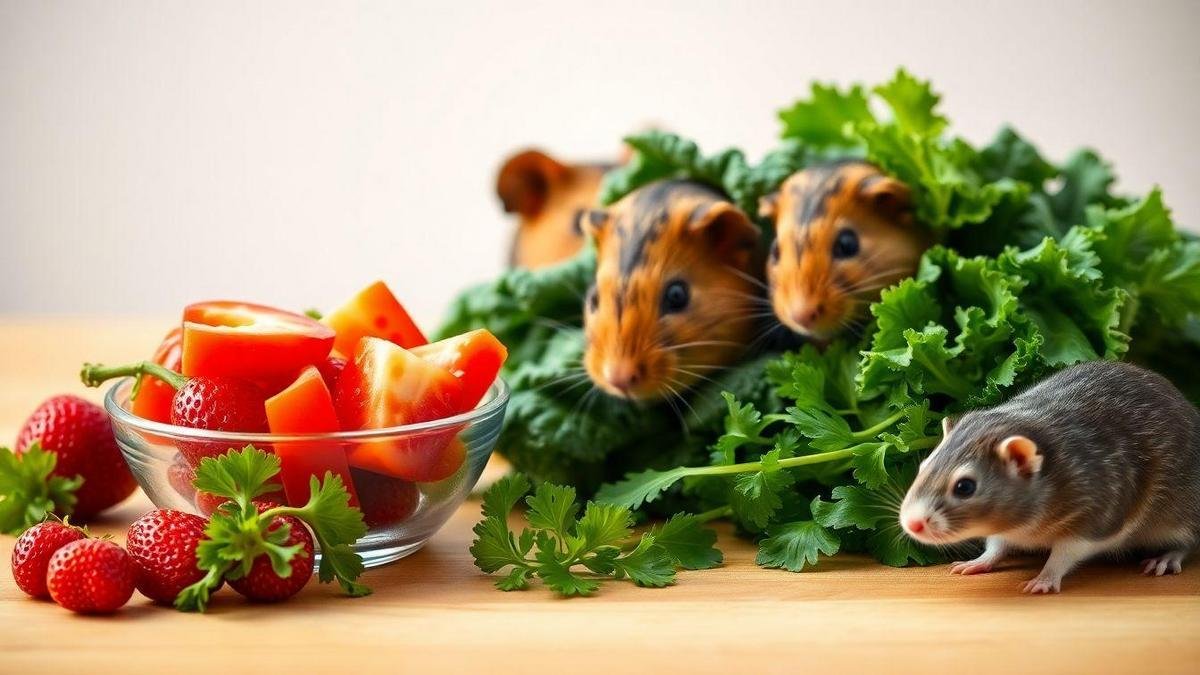
How I provide vitamin C foods for guinea pigs and leafy greens for rats
I focus on fresh, safe, and simple choices and keep the phrase Alimentos ricos em vitaminas para roedores em casa e saúde geral in mind so Vitamin C needs aren’t forgotten.
Best vitamin C foods I trust
- Red bell peppers — crunchy, high in vitamin C
- Kale — nutrient-dense (moderation)
- Parsley — small sprinkle for flavor and vitamins
- Strawberries — occasional treat with vitamin C
- Broccoli — small amounts for variety
| Food | Why I trust it | How I serve it |
|---|---|---|
| Red bell pepper | High vitamin C | Thin strips, raw, small pieces daily |
| Kale | Leafy vitamin boost | A few leaves, 2–3× week |
| Parsley | Flavorful, vitamin-rich | A pinch mixed into greens |
| Strawberry | Appealing treat | Half a berry once or twice a week |
| Broccoli | Crunchy variation | Small florets, not every day |
A routine slice of red bell pepper revived a listless guinea pig once—routine matters.
How I store and serve veggies to keep vitamins intact
- Buy fresh, check for bruises.
- Wash lightly in cool water (no soap).
- Cut just before serving to protect vitamin C.
- Serve at room temperature.
- Remove uneaten portions within a few hours and follow simple food-safety steps.
| Item | Fridge storage | Serving tip |
|---|---|---|
| Leafy greens | 1–3 days in crisper | Rinse and tear just before serving |
| Bell peppers | 3–5 days whole; 24–48 hrs cut | Slice thinly; offer raw |
| Soft fruits | 1–2 days | Serve small pieces to limit sugar |
I keep a small produce box labeled for pets to avoid wilted or spoiled greens and to fit my pet-friendly kitchen setup.
Portion and frequency rules to prevent waste
- Guinea pig: about a handful (~1 cup) mixed fresh veg/day, include one vitamin C source.
- Rat: small portions of leafy greens a few times/week.
- Fruits: small and infrequent — rewards, not staples.
- Remove uneaten food after a few hours; compost or discard.
- Adjust portions by watching body condition and stool.
| Species | Portion I give | Frequency |
|---|---|---|
| Guinea pig | ~1 cup mixed fresh veg | Daily |
| Rat | 1–2 tablespoons leafy greens | 3–4× weekly |
| Fruit treat | Tiny piece | 1–2× weekly |
For species-specific feeding guidance and general care tips, I also consult a broader care guide.
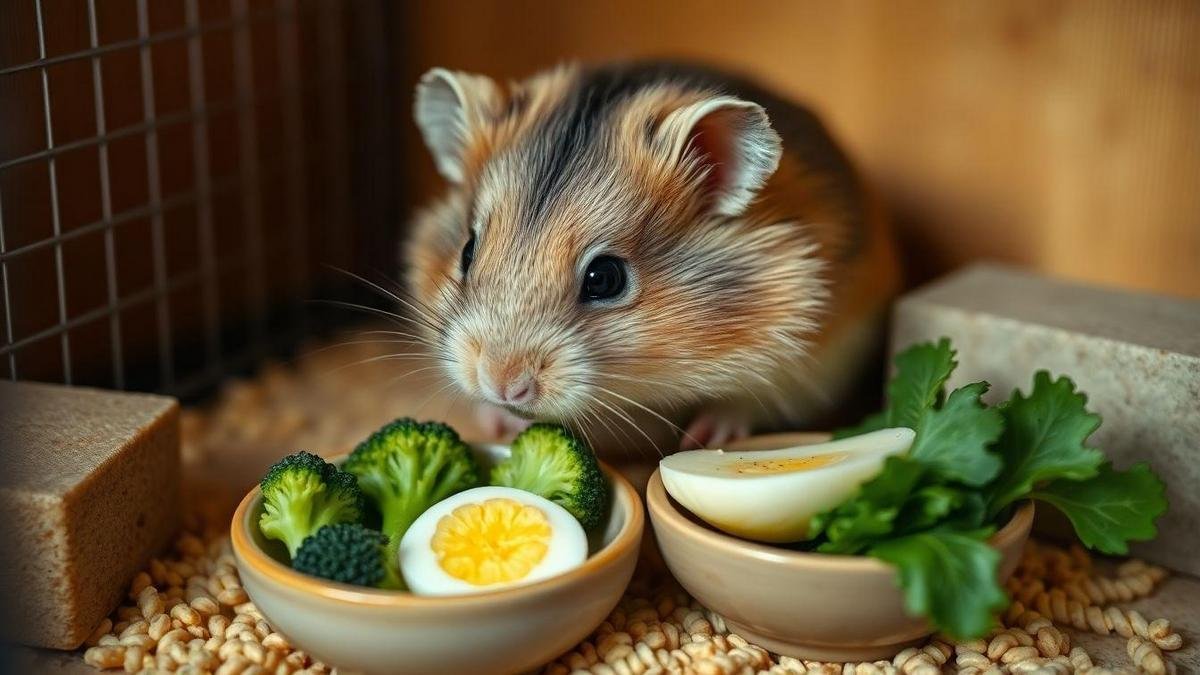
How I add calcium-rich foods for hamsters without causing problems
Calcium sources I rely on
- Fortified pellets as the base — steady calcium and vitamins.
- Small fresh: broccoli floret, parsley or dandelion greens (tiny).
- Crushed eggshell (finely powdered) rarely as a safe boost.
- Occasional plain Greek yogurt drops (very rare).
I avoid high-oxalate greens like spinach often and check pellet labels for balanced minerals. I also search home practice ideas to match food to habitat.
Avoiding excess calcium — signs I monitor
- Straining to urinate or blood in bedding
- Less appetite or sudden weight change
- Lethargy or unusual hiding
- Constipation or very hard stools
I rotate foods and keep calcium treats to a pinch or pea-sized piece.
| Source | Typical serving (per hamster) | Frequency |
|---|---|---|
| Fortified pellets | Measured scoop per bag | Daily |
| Fresh greens | 1–2 small leaves / tiny floret | 2–3× week |
| Crushed eggshell | Very small pinch | ≤1× week |
| Yogurt drop | Half or less | Occasional |
I keep a log when introducing new items to spot issues early.
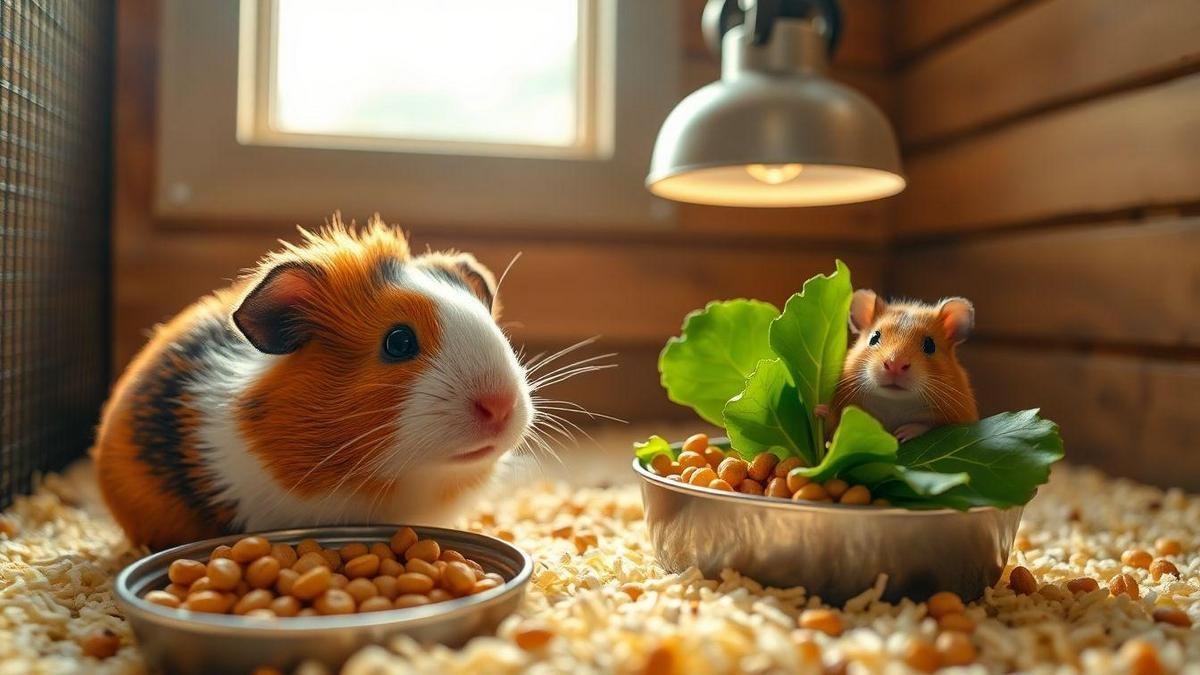
Where I find vitamin D sources and when I use them
Vitamin D sources I recommend
- Commercial fortified pellets — main daily source of vitamin D.
- Fresh vegetables provide small boosts and variety.
- Safe sunlight or a vet-grade UVB lamp can help some species (glass blocks UVB; vet guidance required).
I read guides and the phrase Alimentos ricos em vitaminas para roedores em casa e saúde geral to pick good foods and match them to each pet’s needs.
| Source | Why I use it | Quick note |
|---|---|---|
| Fortified pellets | Main, steady vitamin D | Choose species-specific formula |
| Fresh vegetables | Small boost and variety | Rotate safe veggies only |
| UVB lamp / supervised sun | Helps skin make vitamin D | Use vet advice for timing and distance |
When supplements are needed and how I pick them
I use supplements only with veterinary advice for issues like slow growth, soft bones, or fractures.
Rules I follow:
- Use vet-recommended products.
- Confirm dose (IU per drop/pill).
- Prefer liquid forms for tiny pets.
- Avoid human high-dose pills unless prescribed.
| Form | Good for | Watch for |
|---|---|---|
| Liquid D3 | Small rodents — easy to dose | Measure drops carefully |
| Low-dose tablets | Larger rodents | Break or crush if allowed |
| Vet compound | Special needs | Use as directed |
Too much vitamin D can cause weakness and loss of appetite.
Balancing diet and light for healthy bones
- Daily: fortified pellet as main food.
- 2–3× weekly: fresh vegetables for variety.
- 1–3× weekly: brief supervised sun/UVB exposure if vet OK.
- Regular vet checks for bone health; watch for soft gait or fractures.

How I pick nutrient-dense pellets and plan balanced diets
What I read on labels
I read the label for protein, fat, and fiber percentages and check the ingredient list. I prefer named grains/seeds first and avoid mixes with big seed piles that enable picky eating. I also check vitamins A, D, E and minerals like calcium and phosphorus.
| Label item | What I look for | Why it matters |
|---|---|---|
| Protein | Moderate percentage | Builds muscle & energy |
| Fat | Moderate | Energy source, not too high |
| Fiber | Present | Keeps digestion regular |
| Ingredient order | Named grains/seeds first | Less filler |
| Vitamins & minerals | Listed by name | Adds nutritional coverage |
I keep general care guidance in mind when picking pellets—brands that list key vitamins fit the idea of home nutrition and general health.
Combining pellets with fresh vegetables
Pellets are the base; fresh vegetables add variety and vitamins. I prepare them plain, washed, and chopped fine, removing leftovers after a few hours.
| Vegetable | How I serve | Frequency |
|---|---|---|
| Carrot | Tiny dice | 2–3× week |
| Cucumber | Thin slice | 2–3× week |
| Bell pepper | Small piece, seeds removed | 1–2× week |
| Leafy greens (romaine, small kale) | Washed, torn small | 2× week, small amounts |
| Broccoli | Small floret | 1–2× week |
Avoid: onion, garlic, raw beans, and high-sugar items. Introduce new foods slowly and follow tips for helping pets adjust to dietary changes if stool softens.
Simple feeding schedule
| Item | Frequency | Notes |
|---|---|---|
| Pellets | Daily | Main food; measured scoop or free-access bowl — plan placement as in a good indoor feeding station |
| Fresh vegetables | Several times/week | Small pieces; remove after 2 hours |
| Treats (seeds, fruit) | 1–2× week | Tiny amount; not daily |
| Water | Always | Fresh daily; check bottle/bowl |
Adjust portions by weight and behavior—pellet portion first if weight changes.
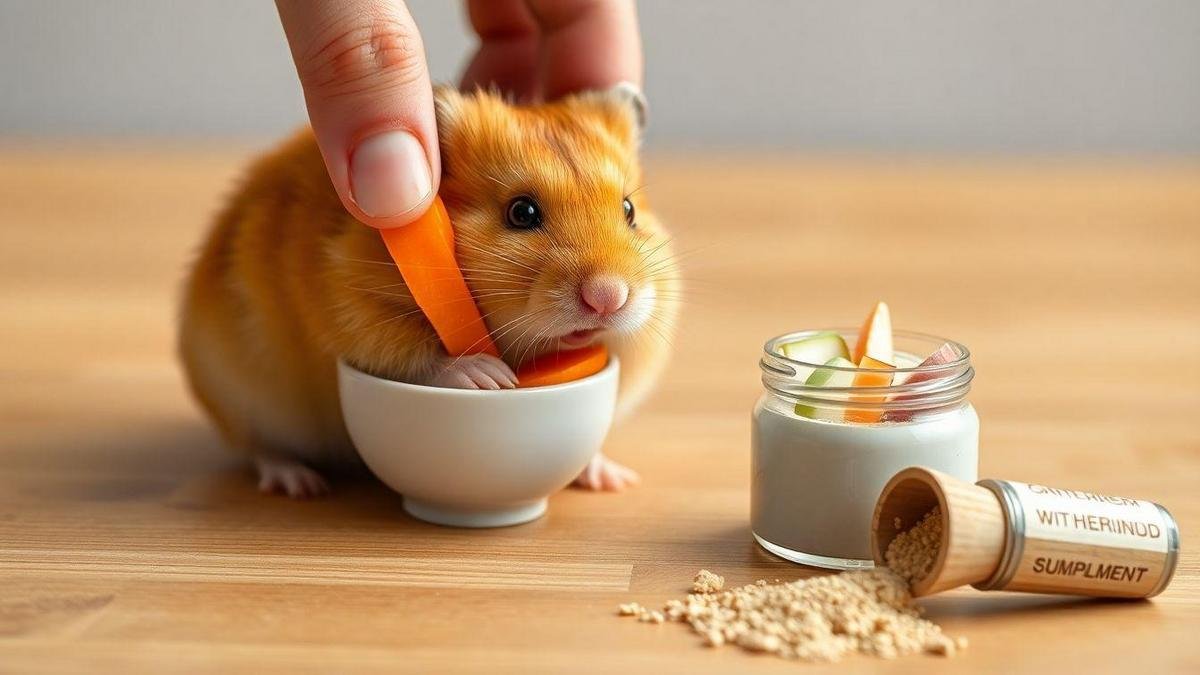
When I use supplements and safe fresh foods for treats
Signs a supplement might help and how I choose one
I watch for changes in eating, coat, energy, or wounds. If I see worrying signs, I call the vet before supplementing. I choose products with clear ingredients, vet backing, and species-aware formulations. I log doses and responses.
Safe fruits and vegetables I give as treats
| Food | Typical portion | Notes |
|---|---|---|
| Apple (no seeds) | Tiny slice, 1–2× week | Hydration, mild sugars |
| Carrot | Small stick, 2–3× week | Beta-carotene |
| Cucumber | Thin slice, 2–3× week | Hydrating, low calories |
| Blueberry | 1 berry, 1–2× week | Antioxidants; feed sparingly |
| Bell pepper | Small strip, 2–3× week | High vitamin C |
| Broccoli | Tiny floret, 1–2× week | Good fiber; can cause gas |
| Spinach | Leaf, once/week | High calcium; limit for some species |
| Pear (no seeds) | Thin slice, 1–2× week | Moderate sugar |
I always wash produce, remove pits/seeds, and avoid citrus for many rodents unless vet OK. Never give chocolate, onion, garlic, or raw beans.
Rules for treats and supplements
- Treats are extras, not main food.
- Give fresh food in tiny amounts; remove leftovers within hours.
- Follow vet doses for supplements.
- Don’t mix multiple vitamin products without vet OK.
- Introduce new foods slowly; stop if diarrhea or appetite loss.
- Store supplements cool/dry and check expiry dates.
For enrichment and keeping pets occupied while you’re away, I use ideas from our entertainment and enrichment guide.
Practical shopping list for Alimentos ricos em vitaminas para roedores em casa e saúde geral
- Fortified species-specific pellets (check vitamin/mineral panel) — see general care recommendations
- Fresh red bell peppers, kale, romaine
- Carrots, broccoli, parsley
- Small, low-sugar fruits: strawberries, blueberries, apple (no seeds)
- Small kitchen scale or measuring scoop, produce storage box, and a log notebook — store and label per food-safety tips
Use this list to plan balanced meals that match Alimentos ricos em vitaminas para roedores em casa e saúde geral principles for home nutrition and overall health.
Conclusion
Keep it simple: a base of fortified pellets, a steady supply of fresh, vitamin-rich veggies (bell peppers, kale, small greens), daily observation for warning signs, and supplements only with a vet’s OK. Guard against both deficiency and overload—especially calcium and vitamin D. Tiny habits add up: a daily slice of pepper or a handful of greens builds a strong little body. When in doubt, call the vet.
For more practical tips and easy recipes, browse our collection of posts.
Frequently Asked Questions
What vitamin-rich vegetables can I give my pet rodent?
Small amounts of kale, spinach (limited), carrots, and bell pepper—chopped fine. Rotate variety.
Are citrus fruits safe for pet rodents?
I avoid citrus for most rodents—they’re too acidic and sugary. Offer tiny tastes only if a vet approves.
How often should I offer vitamin-rich foods?
Fresh veggies daily in teaspoon–tablespoon amounts depending on size; fruit once or twice weekly.
Do I need to use vitamin supplements?
A good pellet diet plus fresh foods is usually enough. Use supplements only under veterinary guidance.
What items should I buy for Alimentos ricos em vitaminas para roedores em casa e saúde geral?
Leafy greens, bell peppers, broccoli, carrots, apples, and cooked sweet potato. Avoid onions, raw beans, and moldy food.
For more background about this site, visit our About Us.

